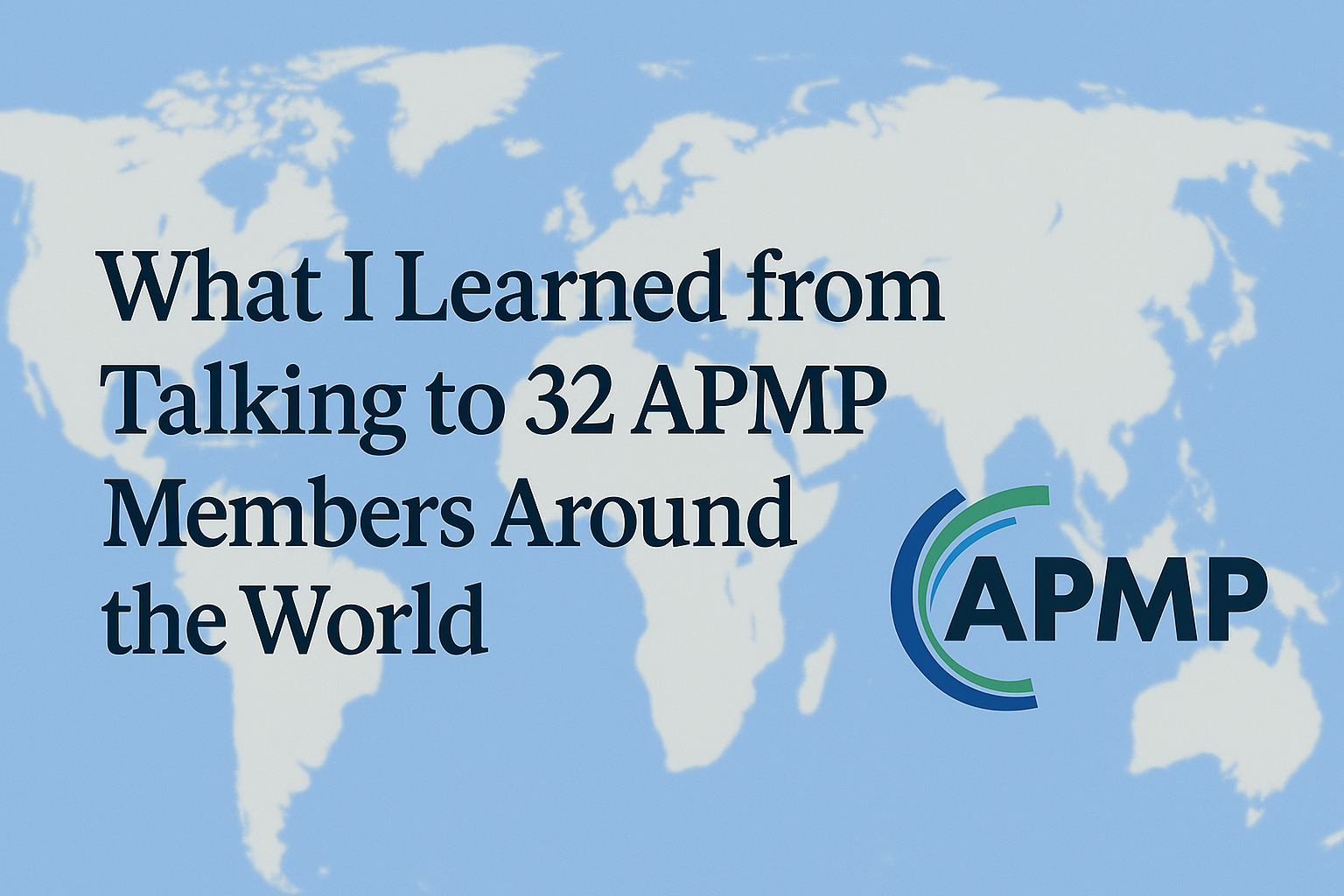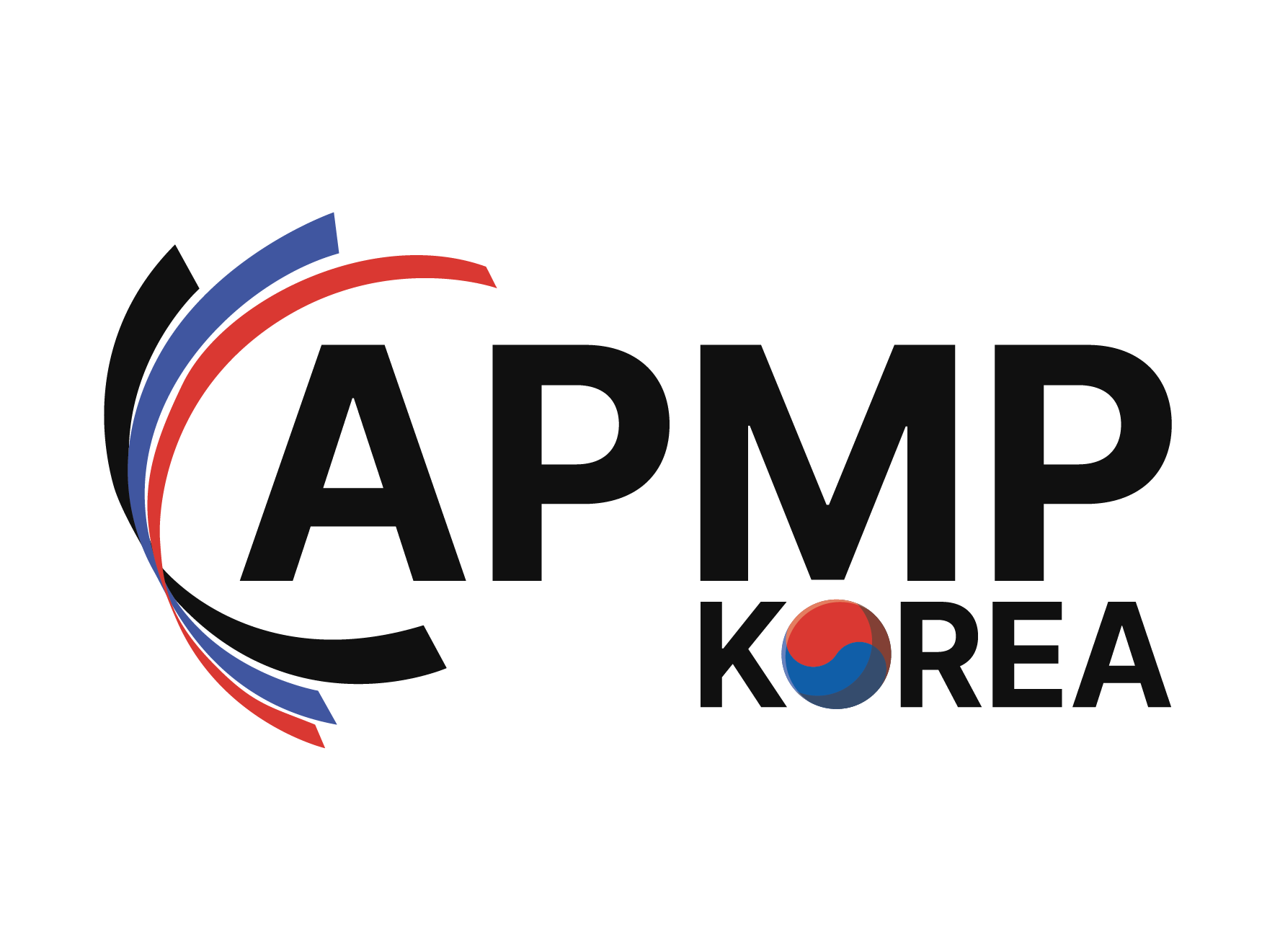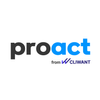What I Learned from Talking to 32 APMP Members Around the World

Last month, I had the chance to speak with 32 APMP members across 7 countries — including the U.S., UK, Australia, Germany, the Netherlands, Japan, Spain, and others.
On March 27th, APMP Korea officially launched, backed by five leading companies and around 20 founding members. I’m deeply grateful to those who committed their time and energy to strengthen the bid and proposal profession in Korea and shape a vision that connects us globally.
To gather practical insights, I reached out to APMP members around the world — regardless of their region, experience, or field — simply to listen. I wanted to understand what they had learned, what they were still figuring out, and how we might grow stronger together.
What I received in return was unexpected generosity. People opened up about their stories, struggles, day-to-day tools, and even the strategies they use to grow their teams and communities — all shared without hesitation.
This post summarizes those conversations — anonymized and lightly edited — as a reflection of what I learned from them. I hope it offers a helpful mirror for others building their careers in this field, especially here in Korea, and a reminder that no matter where we work, we’re not doing this alone.
🇺🇸 Deep Dive: The United States
The U.S. represents a highly diverse landscape for bid and proposal professionals, spanning federal, state, and commercial sectors. Roles are well-differentiated — including Proposal Managers, Capture Managers, Technical Writers, and Compliance Leads — often following color-team review structures (Pink, Red, Blue, Gold) and utilizing tools like compliance matrices, content libraries, and SharePoint systems.
Proposal planning frequently begins months in advance, especially in federal sectors. Oral presentations are seeing renewed emphasis as AI-generated proposals risk becoming formulaic. Several professionals emphasized that “the real competition happens live.”
Go/No-Go decisions were described as both structured and political — often requiring balancing between sales pushing for volume and proposal teams pushing for selectivity. Some teams use scorecards or APMP matrices. Others rely on past performance, contract familiarity, and pricing scenarios. One participant from the healthcare sector mentioned:
“If the RFP looks like it's written for someone else, or if we can't reasonably model profitability, we walk away. But we always read it first — line by line.”
FOIA (Freedom of Information Act) is used proactively by many teams to access past award data and clarify evaluation patterns. While few have dedicated FOIA specialists, experienced teams know how to leverage it when preparing for high-stakes bids or potential protests. If a contract is awarded despite apparent non-compliance, it can trigger a formal challenge.
AI usage is expanding, especially for first drafts and formatting, but proposal managers still emphasize the need for human oversight. One senior professional shared:
“We tested multiple AI RFP tools — what we need isn’t surface-level automation. We need a system that actually helps with compliance checking, clause tracking, and auditability.”
A common 4-step division of roles was described:
- Account Manager – manages long-term relationship
- Capture Manager – identifies the opportunity and leads the Go/No-Go
- Proposal Manager – owns the schedule, deadlines, and collaboration
- Proposal Writer/SMEs – develops the content
Federal projects often involve multiple review rounds, while commercial sectors — especially insurance or healthcare — are more iterative. In broker-managed industries, vendors often submit multiple versions of proposals through negotiated feedback loops.
A key insight: Public-sector evaluations are procedural and scored, while commercial evaluations are relationship-driven and fluid. Success depends equally on content, credibility, and conversation.
🇬🇧 Deep Dive: The United Kingdom
The UK is often seen as a structured and mature environment for bid professionals. Proposal management is recognized as a career with specialization, certification pathways, and active community support.
One healthcare proposal lead described their internal structure as:
- Capture Team: Business development, early influence
- Proposal Team: Response strategy, writing, compliance
- Contract Team: Pricing, negotiation, terms
Multiple members emphasized that Go/No-Go processes are mission-critical due to short timelines (typically 4–6 weeks) and resource constraints. While templates are common, seasoned professionals rely more on alignment with strategic fit and customer relationships than pure scoring.
UK teams often use external market data sources like Tussell to analyze contract history. Larger companies are experimenting with tools like AutogenAI to generate first drafts or tailor tone and language. Several noted that AI is most useful when integrated into the broader team workflow.
One member clarified a recent trend:
“Pre-bid engagement workshops are becoming more common. Some confuse this with ‘Competitive Dialogue,’ which is a specific EU procedure — but these are more informal and about shaping the tender early.”
SMEs show growing interest in AI, but many hesitate due to complexity and unclear ROI. Several stressed the importance of onboarding and internal training.
Practitioners praised APMP UK's training ecosystem — especially the ATO (Approved Training Organization) program — for retaining talent and growing skills. Monthly peer check-ins, online meetups, and thematic webinars help create both learning and belonging.
A memorable quote captured the UK spirit:
“We’re not just writers. We’re the bridge between what our clients want and what our companies can promise.”
Country-by-Country: Highlights
These conversations show how different regions adapt APMP’s core principles — structure, learning, and community — in ways that reflect their unique market conditions. For chapters like ours in Korea, this diversity isn’t a challenge. It’s an invitation to shape our own version of success.
🇯🇵 Japan
- Structured, visually-driven proposal formats using slides
- Manual processes dominate; Proposal Automation Tool and some LLM tools used occasionally
- No central government tender platform; award data may be monetized by region
- APMP growth tied to collaboration with JPMA, a national training body
- Cultural caution toward new tech, but high interest in AI experimentation
🇳🇱 Netherlands
- Clear split between Bid Manager (planning/risk) and Writer (content/inquiry)
- Strong B2G focus with emphasis on compliance and legal liability
- Go/No-Go mostly led by executives, but checklists are emerging
- High interest in competitor analysis, but few local tool vendors
- Smaller firms more ad hoc, larger firms more formalized
🇪🇸 Spain
- Regional and language fragmentation affects standardization
- One person often handles entire proposal lifecycle
- APMP used to benchmark global standards and build personal visibility
- Side consulting and upskilling via community catch-ups common
- Passionate belief in education-driven transformation of the market
🇦🇺 Australia
- Proposal teams collaborate across APAC, esp. in construction/infra
- Familiar with joint ventures and consortium bids with Asian partners
- Internal process mirrors Western norms, adapted for regional nuance
- Chapter growth fueled by early cross-border efforts
- Active interest in Korean collaboration and tech partnerships
🇩🇪 Germany
- Less centralized than UK; interaction with vendors post-release more open under EU norms
- Proposal professionals note differences in tone and legal formality compared to U.S. practices
- Training and FAR-equivalent standards less emphasized; more flexible market engagement
Shared Themes and Local Distinctions
Despite varying regulations and tools, common themes emerged:
- Desire for clarity and structure: Whether in Europe, Asia, or North America, professionals seek clearer processes and better-aligned roles.
- Need for scalable tools: AI, content libraries, and compliance support tools are of interest globally, but ease of onboarding is critical.
- Importance of community: APMP is valued not only for education but also for emotional connection and peer support.
Key contrasts included:
- Centralized vs. fragmented procurement systems
- Specialized vs. generalist bid roles
- Software adoption trends by market size and language
- Cultural preferences in Go/No-Go decision-making (speed, autonomy, documentation)
- Public vs. commercial RFP dynamics (formal vs. relationship-driven)
Final Thoughts
Conversations with 32 professionals reminded me that while our industries, geographies, and tools may differ, the heart of proposal work is remarkably universal. We all want to win, to work smarter, and to feel a sense of progress and purpose in what we do.
For those of us in Korea and other newer APMP chapters, I hope this glimpse into the global community provides encouragement and ideas. If there's one thing I took away from every conversation, it's that we're stronger when we learn from one another — and there's no better time to start than now.

